Having a solid workflow in place is key to the success of any project. This is especially true in software development, where requirements are complex and teams can span time zones, countries, and specialties.
The best way to make sure this complexity doesn`t get out of hand is to have clear processes and use effective tools. With the evolution of AI, more and more tools are emerging that can significantly streamline collaboration, including assisting developers in their work.
The importance of a seamless software development workflow
Development is so much more than just writing code. It involves brainstorming and planning, giving feedback and doing code reviews, monitoring systems, debugging, and documenting specs.
Because the dev workflow covers a wide range of responsibilities and people, it's important to use tools in a smart way to make this process as seamless as possible. In fact, tools are one of the key factors that influence developer efficiency, in addition to their work environment, training, and skills. Or as the saying goes, one is only as good as the tools they use.
Using the right tools to integrate into your team's workflow has several benefits.
Improving software quality
Having clear processes and tools in place ensures the end result will always match expectations. From product discovery to post-production monitoring, a solid software engineering workflow ensures that everything works accordingly - from clean code to successful software products.
Reducing development time and cost
A well-defined workflow provides developers with a clear roadmap for application development. By eliminating bottlenecks, minimizing manual interventions, and automating repetitive tasks, teams can deliver faster, with less effort and cost.
Identifying issues early on
A seamless workflow incorporates automated testing tools. This enables teams not only to test applications more efficiently but also to identify potential issues early on. By reducing the risk of major setbacks throughout the development process, the path to the final release is guaranteed to be smooth.
Using generative AI to supercharge development productivity
Development teams are turning more and more towards AI and automation to improve efficiency, speed up repetitive tasks and get assistance. As these tools are evolving, so is the number of tasks they can handle throughout each stage of the software development life cycle.
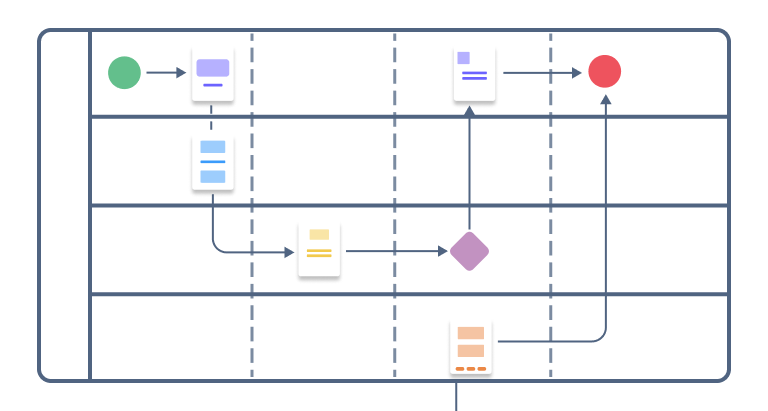
Design and prototyping
By understanding user preferences and existing design patterns, AI-powered tools can assist in generating design suggestions, UI components, or even high-fidelity mock-ups.
Project management and planning
AI tools can enhance decision-making and help with other project management responsibilities such as resource allocation, task prioritization, or risk assessment.
Code generation and documentation
Generative AI can help developers write code faster and understand code written by others a lot easier. In addition to generating documentation, AI tools can suggest code snippets and auto-complete code by predicting what developers want to type in.
Debugging, cleaning, and testing code
By using static code analysis and machine learning, AI tools can identify issues in the codebase and assist with code review by giving useful feedback and improvement suggestions. They can also automate various testing activities, including test case generation, test execution, and result analysis.
Code refactoring and optimization
Optimizing code for performance and efficiency can be a complex task. Generative AI tools can assist developers by automatically suggesting code refactoring opportunities, identifying performance bottlenecks, and optimizing algorithms.
AI tools to boost your application development workflow
- GeniusUI: uses ChatGPT and GPT-4 to turn written prompts into UI components
- CollabGPT: AI-generated status updates, insights, reports, and alerts for a more efficient project development workflow
- DeepCode AI: AI-powered code review tool
- GitHub Copilot: uses OpenAI Codex to automatically generate code
- Mintlify: AI-powered code documentation tool
Let's explore the tools in each category.
GeniusUI
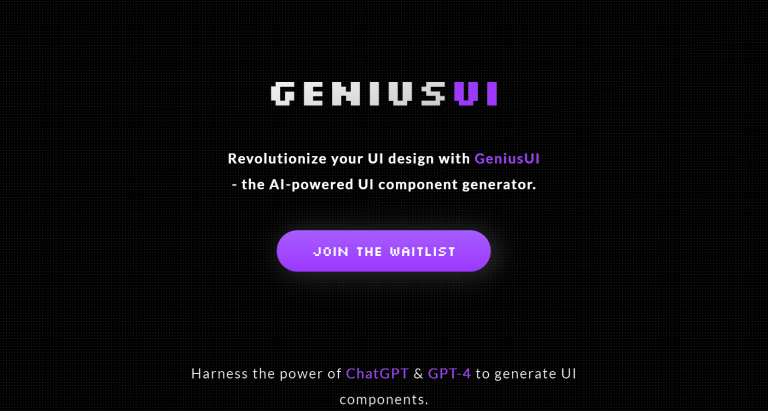
Source: GeniusUI
Any modern web development workflow usually starts with design and prototyping. In this phase, teams use design thinking to define application requirements, including screens and reusable components. AI-powered tools like GeniusUI can simplify this process by allowing designers, developers, or product owners to automatically generate UI components using natural language.
For example, just by typing in “A search bar with rounded corners with a placeholder text”, you can generate a search bar and then reuse it wherever necessary. The tool uses AI to understand design requirements and then generate components for popular front-end frameworks like React, Vue, and Angular.
Other AI-powered design & prototyping tools:
Fronty - uses AI to convert images into HTML CSS code. It can turn screenshots of web pages into functional websites.
Visily - converts through AI hand-drawn sketches, screenshots, or templates into software wireframes and prototypes.
CollabGPT
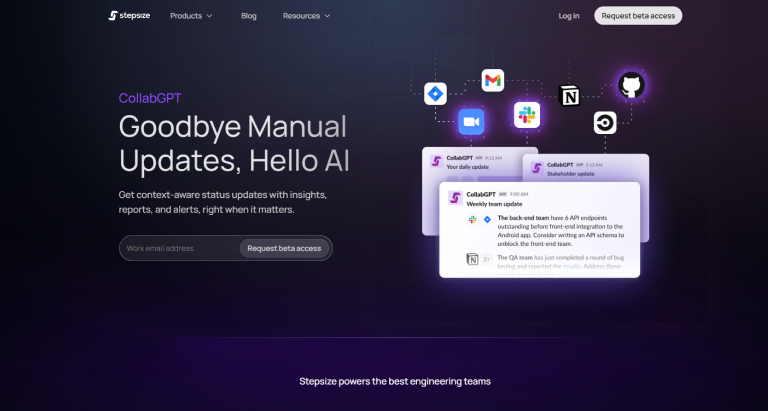
Source: Stepsize
The application development workflow is by no means a short or easy process. It involves a lot of people, methodologies, and activities, with each stage of the process having its own set of workflow-related demands. This is why AI tools like CollabGPT are useful in keeping everyone up to date with what's happening across the team and in the project.
The AI assistant integrates with Slack, Jira, and GitHub and acts as a project historian and taskmaster. This means it keeps track of everything happening across the team`s communication and project management tools and sends daily and weekly status updates, reports, and insight. By observing activities from other tools, the AI assistant can then answer questions from team members, saving valuable time spent in meetings.
Other AI-powered project management & collaboration tools:
ClickUp - uses an AI assistant to perform tasks based on role-focused prompt templates (pre-made prompts for marketing, sales, product, and engineering teams).
Geekbot - simple AI that can integrate with Slack and ask questions via Slack conversations to deliver the daily standup.
DeepCode AI
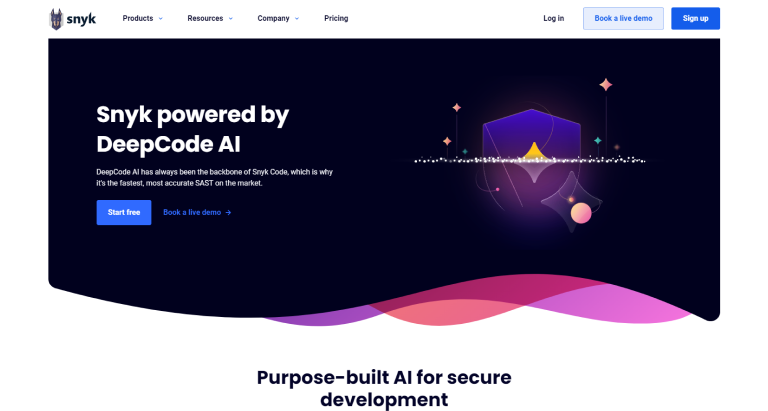
Source: Snyk
By leveraging machine learning algorithms and static code analysis, AI can analyze codebases, identify potential issues, and provide actionable feedback to developers. It's like having a code reviewer that never sleeps and is capable of going through huge amounts of data to uncover bugs, issues, and security risks. Tools like DeepCode AI can not only automate issue detection, but they can also reinforce coding standards and suggest fixes.
DeepCode AI works with most programming languages and can integrate with code editors or be used as a stand-alone platform. It helps developers write cleaner code, spot irregularities and fix vulnerabilities before they accrue technical debt. Improvement recommendations and fixes are automatically scanned to ensure they won’t introduce new issues and developers can approve or reject suggested fixes.
Other AI-powered code review tools:
Codiga - uses AI to clean up code, including reviewing and auto-fixing issues based on any code review rules you want to enforce.
Crucible - Atlassian`s AI-powered tool which allows teams to review code, discuss changes and identify bugs across a host of version control systems.
GitHub Copilot
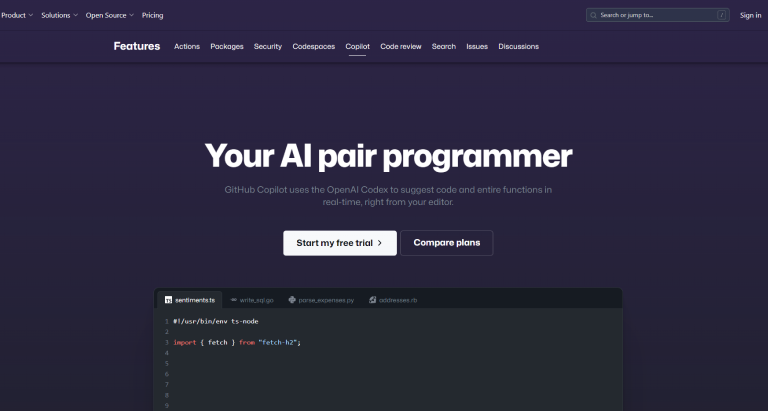
Source: GitHub Copilot
Generative AI tools can help developers code faster by automatically generating code snippets or even entire functions. By understanding patterns in the existing code, these tools can provide developers with assistance and speed up the implementation of common programming tasks.
One such example is GitHub Copilot, which integrates into the IDE and generates code based on the project`s context and style conventions. GitHub Copilot cuts down on the amount of boilerplate code developers have to write. Instead of coding everything from scratch, developers can write a comment describing the logic and then GitHub Copilot generates the code to implement the solution.
Other AI-powered code generation tools:
Tabnine - automatically suggests whole lines of code and full functions based on existing context and syntax.
Replit Ghostwriter - uses AI to provide code suggestions based on the code in your current file and existing comments.
Mintlify
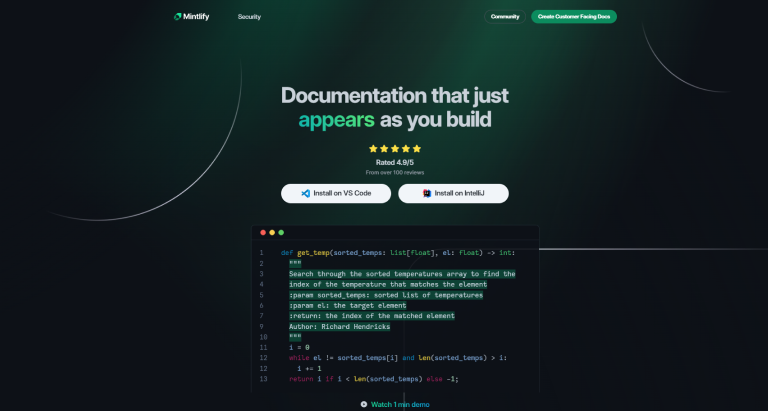
Source: Mintlify
Trying to understand or update undocumented code is much like trying to find your way in a crowded city without a map. You probably won't get very far. This is why code documentation is an important part of creating an efficient app development workflow. AI tools like Mintlify can automate this process by generating documentation as you are writing the code.
AI-powered documentation tools like Mintlify are designed to understand code in context and generate relevant descriptions, including interpreting human-readable method names. By integrating such tools into a code editor, you can save time on documentation and improve the code`s readability, regardless of its complexity.
Other AI-powered documentation tools:
DocuWriter.ai - generates comprehensive documentation from source code files with just one click using AI.
Docify.ai - AI-assisted code comment generator and documentation tool, including docstrings and inline comments.
Your agile development workflow x10
AI-powered development tools are getting smarter and they are covering more and more steps in the agile development workflow, from design and planning to coding and testing. With their ability to automate tasks, detect issues and suggest improvements, these tools can significantly improve productivity throughout each stage.
One of the key benefits of AI-powered tools is their ability to automate mundane tasks, allowing teams to focus their time and energy on more complex and creative aspects of software development. By automating repetitive tasks, these tools can help teams put in place a solid workflow, which results in better software products and a quicker time to market.








